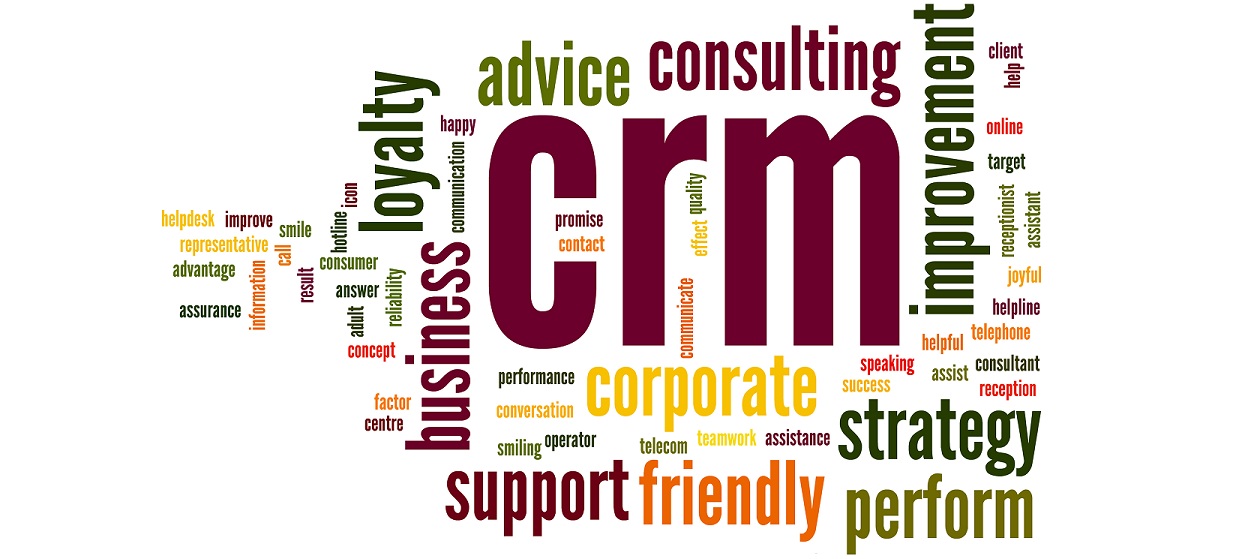
CRM & Content Marketing: The Dynamic Duo That Drives Results
In the ever-evolving landscape of digital marketing, businesses are constantly seeking innovative strategies to connect with their target audience, nurture leads, and ultimately, boost their bottom line. Two powerful forces often stand out as key players in this quest for success: Customer Relationship Management (CRM) and Content Marketing. While they might seem like distinct entities, when combined strategically, CRM and content marketing form an unstoppable force, a dynamic duo capable of transforming your business from good to great.
This comprehensive guide delves into the symbiotic relationship between CRM and content marketing, exploring how they complement each other, enhance each other’s strengths, and ultimately, drive unparalleled business growth. We’ll explore the core concepts of each, the benefits of their integration, practical strategies for implementation, and real-world examples of success. Get ready to unlock the full potential of your marketing efforts!
Understanding CRM: The Heart of Customer Relationships
At its core, CRM is a technology and strategy designed to manage and analyze customer interactions and data throughout the customer lifecycle. It’s about building strong, lasting relationships with your customers, understanding their needs, and providing personalized experiences that keep them coming back for more. Think of it as the central nervous system of your business, connecting all your customer-facing departments and providing a unified view of each customer.
Key Components of a CRM System:
- Contact Management: Storing and organizing customer information, including contact details, purchase history, and communication logs.
- Sales Force Automation (SFA): Streamlining sales processes, from lead generation to deal closure.
- Marketing Automation: Automating marketing tasks, such as email campaigns, lead nurturing, and social media management.
- Customer Service & Support: Providing efficient and personalized customer service, resolving issues, and building loyalty.
- Analytics & Reporting: Tracking key performance indicators (KPIs), analyzing customer behavior, and generating reports to inform decision-making.
The benefits of a robust CRM system are numerous. It helps businesses:
- Improve Customer Relationships: By providing a 360-degree view of each customer, businesses can personalize interactions and build stronger relationships.
- Increase Sales: Streamlined sales processes, lead prioritization, and targeted marketing campaigns lead to higher conversion rates and increased revenue.
- Enhance Customer Service: Faster response times, personalized support, and proactive issue resolution improve customer satisfaction and loyalty.
- Boost Efficiency: Automating tasks and centralizing data frees up employees to focus on more strategic initiatives.
- Gain Valuable Insights: Data-driven insights into customer behavior, preferences, and trends enable businesses to make informed decisions and optimize their strategies.
Content Marketing: The King of Engagement
Content marketing is a strategic marketing approach focused on creating and distributing valuable, relevant, and consistent content to attract and engage a clearly defined audience — and, ultimately, to drive profitable customer action. It’s about building relationships with your audience by providing them with helpful, informative, and entertaining content that addresses their needs and interests.
Unlike traditional advertising, which often interrupts and pushes messages, content marketing focuses on pulling customers in with valuable content that resonates with their needs. This approach builds trust, establishes authority, and fosters a loyal following.
Key Components of a Content Marketing Strategy:
- Audience Research: Understanding your target audience’s needs, interests, pain points, and online behavior.
- Content Planning: Developing a content calendar that outlines topics, formats, and distribution channels.
- Content Creation: Producing high-quality content in various formats, such as blog posts, articles, videos, infographics, and social media updates.
- Content Distribution: Promoting your content across various channels, including social media, email marketing, and search engine optimization (SEO).
- Content Analysis: Tracking key metrics, such as website traffic, engagement rates, and conversion rates, to measure the effectiveness of your content.
The advantages of a well-executed content marketing strategy are significant:
- Increased Brand Awareness: High-quality content helps you reach a wider audience and establish your brand as a thought leader in your industry.
- Improved SEO: Regularly publishing valuable content helps improve your website’s search engine rankings, driving organic traffic and attracting potential customers.
- Lead Generation: Content can be used to capture leads, nurture them through the sales funnel, and ultimately convert them into customers.
- Enhanced Customer Engagement: Engaging content keeps your audience interested and encourages them to interact with your brand.
- Cost-Effectiveness: Content marketing can be a more cost-effective way to generate leads and drive sales compared to traditional advertising.
The Power of Synergy: CRM and Content Marketing in Harmony
The true magic happens when you integrate your CRM system with your content marketing efforts. This integration allows you to leverage the strengths of both, creating a powerful synergy that drives exceptional results. By combining customer data from your CRM with the reach and engagement of content marketing, you can personalize your messaging, target the right audience, and deliver content that resonates with their specific needs.
How CRM Enhances Content Marketing:
- Audience Segmentation: Your CRM data provides valuable insights into your customer base, allowing you to segment your audience based on demographics, behavior, purchase history, and other relevant factors. This enables you to create highly targeted content that speaks directly to the needs and interests of each segment.
- Personalized Content Delivery: With CRM integration, you can personalize your content delivery based on individual customer profiles. For example, you can send targeted email newsletters featuring products or services that align with their past purchases or browsing history.
- Lead Scoring & Nurturing: CRM systems can be used to score leads based on their engagement with your content. This allows you to prioritize leads that are most likely to convert and nurture them through the sales funnel with relevant content.
- Content Performance Analysis: By tracking content engagement within your CRM, you can identify which content pieces resonate most with different customer segments. This data helps you optimize your content strategy and create more effective content in the future.
- Improved Customer Experience: Personalized content and targeted messaging create a more engaging and relevant customer experience, leading to increased satisfaction and loyalty.
How Content Marketing Enhances CRM:
- Lead Generation: Content marketing drives traffic to your website and generates leads. These leads can then be captured and nurtured within your CRM system.
- Lead Qualification: Content can be used to qualify leads by assessing their engagement with your content and their level of interest in your products or services.
- Customer Education: Content can be used to educate customers about your products or services, helping them make informed purchasing decisions.
- Customer Onboarding: Content can be used to onboard new customers, providing them with the information and resources they need to get started with your products or services.
- Customer Retention: Engaging content helps keep customers interested in your brand and encourages them to stay loyal.
Practical Strategies for Integrating CRM and Content Marketing
Integrating CRM and content marketing is not a one-size-fits-all approach. The specific strategies you implement will depend on your business goals, target audience, and the capabilities of your CRM and content marketing platforms. However, here are some key strategies to get you started:
1. Define Your Goals and Objectives:
Before you start integrating your CRM and content marketing efforts, it’s crucial to define your goals and objectives. What do you want to achieve by integrating these two strategies? Do you want to increase lead generation, improve customer retention, or boost sales? Having clear goals will help you develop a focused and effective integration plan.
2. Choose the Right CRM and Content Marketing Tools:
Select CRM and content marketing platforms that are compatible and offer the features you need. Look for platforms that integrate seamlessly with each other and provide the functionality to segment your audience, personalize your content, and track your results. Consider popular CRM platforms like Salesforce, HubSpot, and Zoho CRM, and content marketing platforms like WordPress, Contentful, and Semrush.
3. Segment Your Audience Based on CRM Data:
Use your CRM data to segment your audience based on various criteria, such as demographics, behavior, purchase history, and engagement with your content. This will enable you to create highly targeted content that resonates with each segment.
4. Personalize Your Content Delivery:
Leverage your CRM data to personalize your content delivery. Use customer names, past purchase history, and other relevant information to create personalized emails, website content, and social media updates. For example, you could send a customer a personalized email featuring products or services that align with their past purchases.
5. Implement Lead Scoring and Nurturing:
Use your CRM system to score leads based on their engagement with your content. Assign points to leads based on actions such as downloading a white paper, attending a webinar, or clicking on a link in an email. Then, nurture these leads through the sales funnel with targeted content that addresses their specific needs and interests.
6. Track and Analyze Your Results:
Track key metrics, such as website traffic, engagement rates, conversion rates, and customer lifetime value, to measure the effectiveness of your integrated CRM and content marketing efforts. Use this data to optimize your strategies and create more effective content in the future. Use analytics tools to connect the dots between your content and customer behavior within your CRM.
7. Automate Where Possible:
Automation is key to efficiency. Use marketing automation tools within your CRM to streamline tasks like email marketing, lead nurturing, and social media posting. This frees up your team to focus on more strategic initiatives.
8. Integrate Content into Your Sales Process:
Equip your sales team with relevant content to share with prospects at different stages of the sales cycle. This could include case studies, product demos, and other valuable resources that help them close deals.
9. Train Your Team:
Ensure your marketing and sales teams are trained on how to use the integrated CRM and content marketing platforms. Provide them with the knowledge and skills they need to effectively leverage these tools to achieve your business goals.
10. Continuously Optimize:
The integration of CRM and content marketing is an ongoing process. Continuously analyze your results, identify areas for improvement, and adjust your strategies accordingly. Stay up-to-date on the latest trends and best practices in CRM and content marketing to ensure you’re maximizing your results.
Real-World Examples of CRM and Content Marketing Success
The power of integrating CRM and content marketing is evident in the success stories of many businesses across various industries. Here are a few examples to illustrate the potential:
Example 1: A SaaS Company
A Software-as-a-Service (SaaS) company uses its CRM to segment its audience based on industry, company size, and product usage. They then create targeted content, such as blog posts, webinars, and case studies, that addresses the specific needs and challenges of each segment. By tracking content engagement within their CRM, they identify which content pieces are most effective at driving leads and converting them into customers. They also personalize their email marketing campaigns based on customer behavior and preferences, leading to higher open rates and conversion rates.
Example 2: An E-commerce Retailer
An e-commerce retailer uses its CRM to track customer purchase history, browsing behavior, and email engagement. They then personalize their website content and email marketing campaigns based on this data. For example, they send targeted emails featuring products that align with a customer’s past purchases or browsing history. They also use dynamic content on their website to display personalized product recommendations and offers based on a customer’s profile. This leads to increased sales, customer loyalty, and repeat purchases.
Example 3: A Financial Services Firm
A financial services firm uses its CRM to track customer inquiries, appointment history, and financial goals. They then create educational content, such as blog posts, articles, and videos, that addresses the specific financial needs and challenges of their customers. They also use their CRM to nurture leads through the sales funnel with targeted content, such as personalized investment advice and retirement planning guides. This leads to increased customer engagement, lead generation, and client acquisition.
These examples demonstrate the versatility and effectiveness of integrating CRM and content marketing across different business models and industries. By implementing the strategies outlined in this guide, you can unlock the full potential of your marketing efforts and drive significant business growth.
Challenges and Considerations
While the benefits of integrating CRM and content marketing are undeniable, there are also some challenges and considerations to keep in mind:
- Data Privacy and Security: Protecting customer data is paramount. Ensure you comply with all relevant data privacy regulations, such as GDPR and CCPA, and implement robust security measures to protect your customer information.
- Data Integration Complexity: Integrating CRM and content marketing platforms can be complex, especially if you’re using multiple platforms. Plan your integration carefully and ensure you have the technical expertise to manage the process.
- Content Creation Resources: Creating high-quality content requires time, effort, and resources. Make sure you have a dedicated team or outsource content creation to ensure you can consistently produce engaging content.
- Measurement and Attribution: Accurately measuring the impact of your integrated CRM and content marketing efforts can be challenging. Implement robust tracking and analytics to gain valuable insights into your performance.
- Team Alignment: Ensure your marketing and sales teams are aligned on your CRM and content marketing strategies. Foster collaboration and communication to ensure everyone is working towards the same goals.
By addressing these challenges and considerations, you can maximize the success of your integrated CRM and content marketing efforts.
The Future of CRM and Content Marketing
The convergence of CRM and content marketing is not just a trend; it’s the future of marketing. As technology continues to evolve, we can expect to see even more sophisticated integrations and personalized experiences. Here are some trends to watch:
- AI-Powered Personalization: Artificial intelligence (AI) will play an increasingly important role in personalizing content and interactions. AI-powered tools can analyze customer data in real-time and deliver highly targeted content recommendations and offers.
- Hyper-Personalization: Businesses will strive for hyper-personalization, tailoring content and experiences to each individual customer’s unique needs and preferences.
- Cross-Channel Marketing: Seamlessly integrating CRM and content marketing across all channels, including email, social media, website, and mobile apps, will be crucial for providing a consistent customer experience.
- Voice Search Optimization: Optimizing content for voice search will become increasingly important as voice assistants become more prevalent.
- Data-Driven Storytelling: Using data to tell compelling stories that resonate with customers will be a key differentiator.
By embracing these trends and continuously adapting your strategies, you can stay ahead of the curve and ensure your business thrives in the ever-evolving marketing landscape.
Conclusion: Embrace the Power Couple
Integrating CRM and content marketing is a game-changer for businesses seeking to build strong customer relationships, generate leads, and drive revenue growth. By combining the power of customer data with the reach and engagement of content marketing, you can create a truly personalized and effective marketing strategy.
This guide has provided you with a comprehensive understanding of the benefits, strategies, and challenges of integrating CRM and content marketing. Now, it’s time to take action. Define your goals, choose the right tools, and implement the strategies outlined in this guide. Embrace the power couple of CRM and content marketing, and watch your business flourish!


